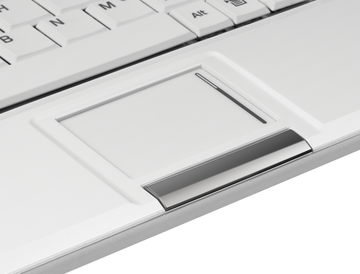Rough terrain
An old EeePC with Linux is great solution for creating a powerful off-road navigation system. Putting together some of the components involves some tricks, however.
|

© tiero - 123RF.com
An old EeePC with Linux is great solution for creating a powerful off-road navigation system. Putting together some of the components involves some tricks, however.
Off-road navigation is the art of knowing where you're going outside the usual routes. In certain situations, it's even a survival mechanism. That's why reliable hardware and software are the most important requirements for those venturing into the unknown.
Off-the-shelf solutions can cost hundreds of dollars. With a little know-how, however, you can build an inexpensive yet robust system that meets the requirements for off-road adventuring. Linux provides an operating system whose stability is hard to beat, thus it makes a good candidate for a computer solution for navigating the wilderness. If you've ever been on a gravel road, you know how important it is to have mechanical stability of the components.
In my particular case, I chose a GPS receiver connected to an out-of-service netbook attached to the frame of the vehicle. This setup allows the driver to glance at the map without taking attention away from what's happening in front of the hood.
GPS receivers typically resemble a computer mouse in shape (Figure 1). In the device's body are antennas and the GPS receiver that you connect to the netbook via a USB cable [1]. This cable provides power and transfers data to the receiver [2]. To allow the receiver to work together with the QLandkarteGT map software, it should be capable of issuing data according to the National Marine Electronics Association protocol (NMEA-0183). This standard was originally conceived as a marine navigation device and is now often used for communication between GPS receivers and PCs or mobile end devices.
 Figure 1: A GPS receiver such as the NL-402U from Navilock costs around US$ 60. The USB connector provides the power and data transfer via the NMEA protocol. (Photo courtesy Navilock)
Figure 1: A GPS receiver such as the NL-402U from Navilock costs around US$ 60. The USB connector provides the power and data transfer via the NMEA protocol. (Photo courtesy Navilock)
GPS receivers in the form of USB sticks have more limited usage in vehicles. The netbook should be placed within the driver's line of sight, and the receiver should be near a window, preferably on the windshield. A USB stick could potentially be extended via cable, but the GPS mouse usually has a magnetic base that allows it to be attached to the vehicle's body.
For vehicular use, a 10-inch netbook is a good choice. It's large enough that you can identify maps and is similar to many commercial navigation systems. Larger displays often have trouble with rough travel conditions and take up too much space in the passenger areas.
In view of these conditions, an almost ideal computer is the classic EeePC from Asus (Figure 2). It's robust, fits the required size, and runs on an SSD rather than a hard drive. Regrettably, Asus bowed to Windows client pressures and hard drives started to show up – the SSD didn't have enough disk space for Microsoft's requirements. Later, other manufacturers brought a similar concept to market (read: Chromebook).
 Figure 2: The classic Asus EeePC is ideal for this purpose. It has the right size, requires little more than 12 volts, and provides an SSD for the required off-road robustness.
Figure 2: The classic Asus EeePC is ideal for this purpose. It has the right size, requires little more than 12 volts, and provides an SSD for the required off-road robustness.
The netbook also has an SD card slot on the right side that allows you to expand its memory and install more recent Linux versions. A forthcoming article in Ubuntu User will explain how to do just that.
Pages: 2
Anyone doing off-road navigation needs special maps. You can create these maps in no time at all.
© 2024 Linux New Media USA, LLC – Legal Notice